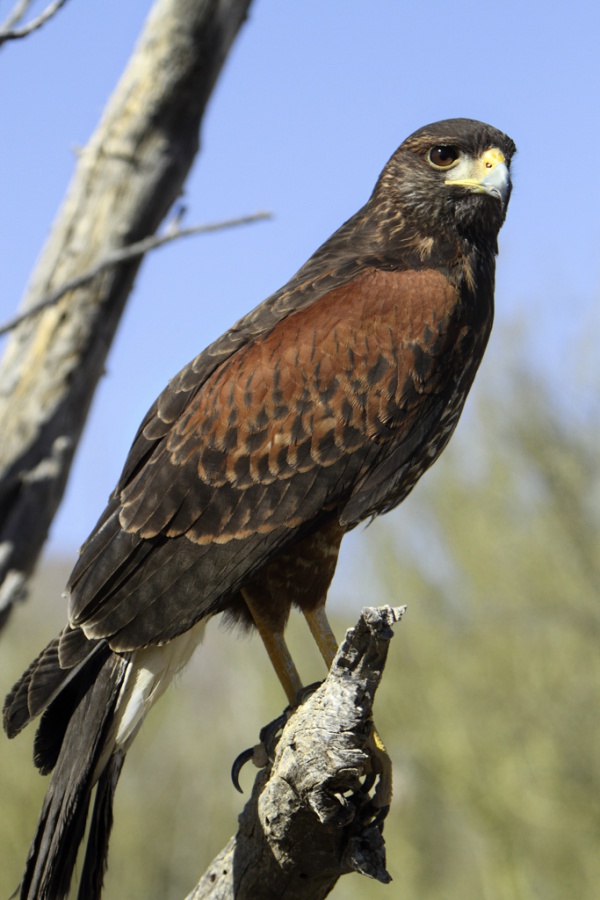Facts About Harris's hawk
The Harris's hawk, also known as the bay-winged or dusky hawk, is a captivating bird of prey found in the southwestern United States, Chile, central Argentina, and Brazil. What distinguishes these medium-large raptors is their unique behavior of hunting in packs, a trait rarely seen in other birds of prey. Their intelligence and trainability make them a popular choice among falconers.
These hawks are easily recognizable with their brownish plumage, reddish shoulders, and distinctively white-banded tails. Females are generally larger than males, showcasing marked sexual dimorphism. Harris's hawks are divided into three subspecies, each adapted to distinct regions. They thrive in sparse woodlands, semi-deserts, and marshes, though their populations are declining due to habitat loss.
When it comes to their diet, Harris's hawks are opportunistic feeders. They hunt small animals such as birds, lizards, mammals, and large insects, and occasionally team up to tackle larger prey. For nesting, they choose small trees or cacti, with the female predominantly leading the nest-building process. These hawks are cooperative breeders, often forming groups of two to seven birds that collaborate in hunting and raising their young.
In the realm of falconry, Harris's hawks are highly esteemed. Their social nature and ease of training make them ideal for the sport. They have also been employed to manage pigeon populations in urban areas. The renowned naturalist John James Audubon featured the Harris's hawk in his celebrated work, "The Birds of America."
Despite their impressive attributes, Harris's hawks face the pressing threat of habitat loss. Conservation efforts are underway to ensure these magnificent birds continue to thrive in the wild.

 Bolivia
Bolivia